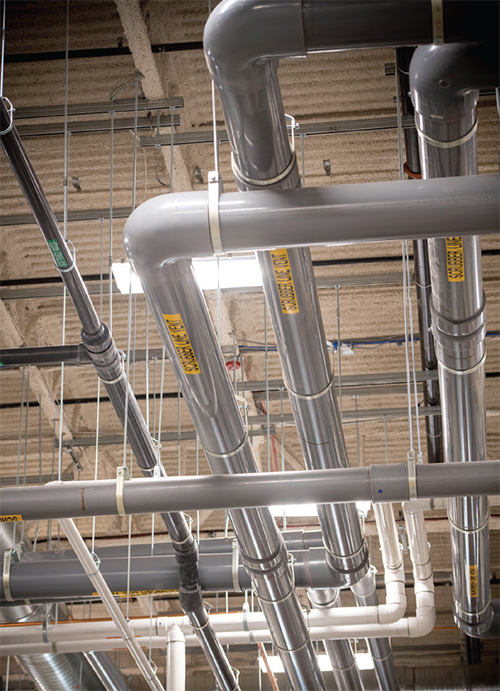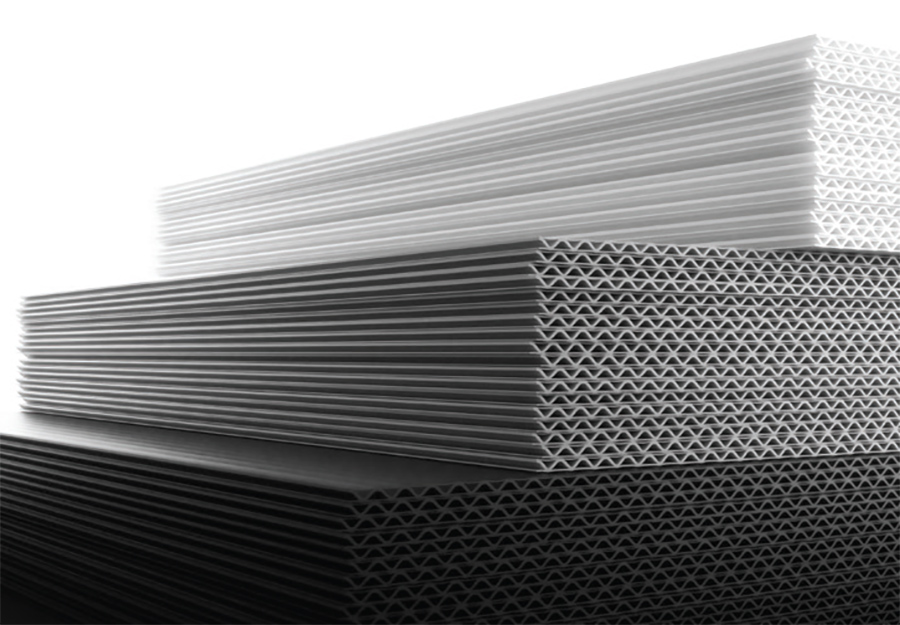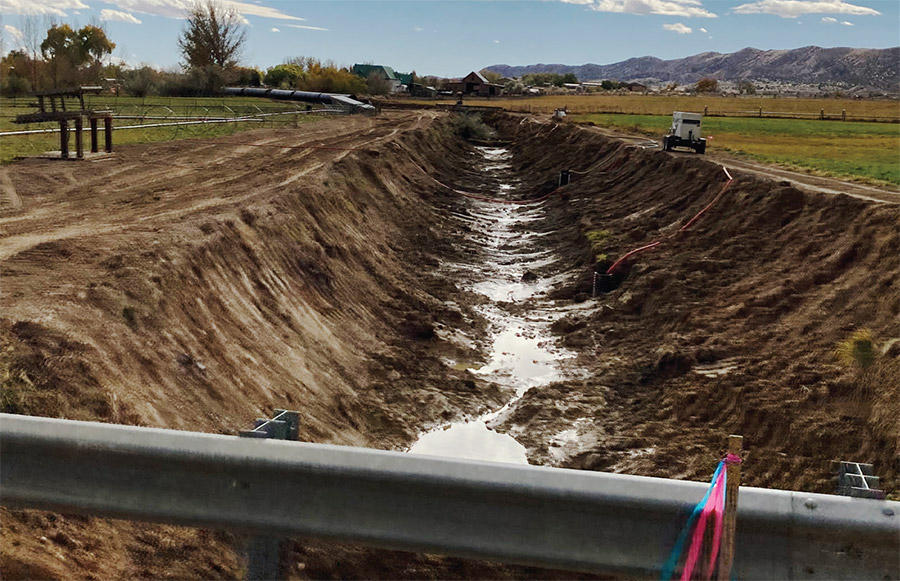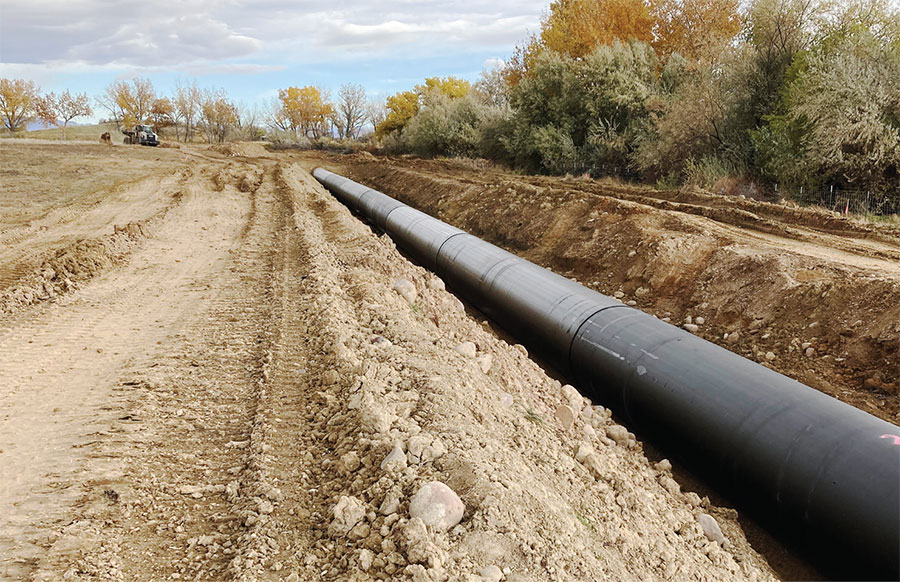
Resin manufacturing facilities are not often described as a labor of love, but with a story rooted in family history and dedication to the community, it is fitting for ResinTech’s plant in Camden, NJ, USA. The 360,000-square-foot project houses the company’s global headquarters and production facilities. Throughout the 175,000-square-foot cation resin manufacturing facility, a variety of chemicals, acids and other caustic materials crisscross overhead, enclosed safely with Corzan® CPVC piping, chosen for its reliability in harsh conditions, long-term performance and affordable installation.
The journey to this facility began humbly in President Larry Gottlieb’s childhood basement in 1986. His father Michael, an expert in ion exchange for water treatment, branched out on his own to use the resin technology for other applications. Eventually, the family business grew and moved out of the house. When Michael opened his first dedicated production facility, Larry and his brother Jeff joined the business. Father and sons worked together as the company expanded over the decades, growing to five other facilities in five states.
In 2020, ResinTech opened the facility in Camden, eager to make more products domestically, staving off supply chain challenges and contributing to the community where it all began. The plant produces water treatment products, including ion exchange resin, granular activated carbon, water purification cartridges and high-purity water systems. The country’s first new ion exchange factory in more than 30 years, the facility has a capacity for up to three quarters of a million cubic feet of strong acid cation resin per year.
Producing water treatment products requires chemicals and caustic materials that continually move around the plant through an intricate system of tanks and pipes. The Camden facility contains nearly 32,700 linear feet of 2″, 3″, 4″, 8″, 10″ and 12″ process piping, about 80 percent of which is made with Corzan CPVC. Corzan CPVC is used in as many as 12 unique applications within the facility. This includes transporting the resin itself, which moves around the plant as a slurry. Corzan CPVC offers superior resistance to corrosive chemicals, high temperatures and elevated pressures, with maximum actual useable range of up to 200°F/93.3°C at 150 psi. Another application is a caustic dilution station, in which liquid caustic soda is diluted. The resulting chemical-liquid mix can reach more than 140°F/60°C, a temperature too high for PVC and the solution too caustic for stainless steel. Neither is an issue for Corzan CPVC.

Along with the material’s performance, Corzan CPVC piping also brought installation efficiencies and associated cost savings. “It’s easy to cut, easy to solvent weld, easy to assemble and products are generally readily available,” according to Larry. “So anywhere we could, we converted to Corzan CPVC.” This included the air purification system, a fume-scrubbing system operating under vacuum using large-diameter pipe. The team was able to use Corzan CPVC in lieu of fiberglass piping, which is more expensive to assemble.
Corzan CPVC is versatile, so while it excels in the plant’s extreme applications, it was a go-to material for the facility’s cooling tower piping and as an alternative to cast iron for drainage piping. It also plays a critical role in emergency environmental mitigation, providing large-diameter containment piping that moves emergency overflows from a below-grade catch basin to a containment pit. Because the flows could contain any of the acids and caustics that reach the factory floor, the emergency piping had to be as robust as the process piping in the plant above, and Corzan CPVC met the challenge.
Larry’s trust in Corzan CPVC stems in part from his history with the material. He began studying CPVC in the late 1990s, applying technology for applications including processing and tank internals. He found he was able to make filter laterals using lengths of Corzan CPVC pipe, which could be exposed to the extreme pH and temperatures within the tanks. Corzan CPVC has made a difference in his own work and in ResinTech’s. “There’s a level of comfort that the material will behave as I expect it to behave in the applications that we use it,” he explained.

The support of the Lubrizol team reinforced Larry’s choice to use Corzan CPVC. The Corzan CPVC team coordinated with the solvent manufacturer, the wholesaler and contractor to complete B31.3 solvent training before they assembled anything on-site to ensure a successful installation. Larry had the support of the Corzan CPVC team before, during and after the installation.
The family’s desire to manufacture stateside is only the beginning of the story behind the manufacturing facility and its location. Camden, a largely industrial city across the Delaware River from Philadelphia, PA, USA, was once an active industrial hub. Today, the area is dotted with brownfields. The bones of a robust infrastructure remain, and the City of Camden is working to attract new industries to the area. ResinTech’s roots are in Camden, so reinvesting in the community was a priority.
With ResinTech’s origins and his current home in Camden County, Larry felt the pull of strong ties while also recognizing the potential: With existing industrial infrastructure, the local wastewater system has the capacity to handle the discharge volume required for the plant. In addition, the location brings the company closer to labor — and the opportunity to bring jobs to the area where ResinTech began. “It was the right place to move and grow our business,” Larry said. www.corzan.com.

The challenge was that the paper-like material being used to protect the lumber would tear or be destroyed, leaving the wood vulnerable to outdoor elements. The solution had to be more durable, lightweight and store flat while being quick to assemble. Preventing moisture and problems from frost also had to be addressed. The distributor provided the following requirements for this project:
- Ships flat, easy-to-store and assemble.
- Material withstands cracking and splitting.
- Sustains long-term outdoor conditions, rain, UV, wind and cold.
- Flexible and lightweight protection.
- Reduce slippage from frost accumulation.

A protective packaging solution doesn’t need to be a complicated and expensive endeavor. In this case, Liberty Plastics, Inc. scored and notched HDPE corrugated plastic sheets, creating a top to place over the wood and fold along the sides before being banded. This solution provided the ultimate protection from outdoor elements:
- HDPE corrugated material will not crack or split from banding or cold environments.
- Lightweight, flat sheets are easy to handle.
- Die-cut and scored for easy folding.
- Anti-static treatment reduces slippage.
- Can be stored outdoors for long periods.
In addition to meeting the customer needs, this solution does not require glues or staples, so it is 100 percent recyclable and it is also completely reusable, reducing packaging weight. This engineered corrugated plastic solution reduces waste, weight, damage and cost. www.libertyplasticsinc.com.
Up to 42 percent of water in the United States is used for irrigation. Surface water is the primary source for irrigation, and it is typically transported via canals due to cost efficiency over long distances. A drawback of open canals is direct contact with the surrounding environment, resulting in water evaporation and seepage loss. A lining can limit seepage loss but reduces capacity and does not address evaporation.
High-density polyethylene (HDPE) pipes from AGRU America, Inc. are mitigating these issues in a solution known as canal enclosures. These enclosures can prevent water loss while addressing public safety concerns by improving water quality, eliminating contamination from external sources, providing redundancy for drinking water supplies, and, in some cases, allowing for the development of recreational projects.

The Steinaker Canal project aims to reduce water loss due to evaporation and seepage by enclosing the canal with AGRU America’s XXL piping system, comprising OD 2,000 mm at SDR 26 and made with PE 4710.
Canal enclosures improve water quality as well as restore and increase the water transportation system’s reliability and capacity through the ability to pressurize water. Pipeline pressurization can be achieved passively with elevation, reducing pumping costs, maintenance and carbon footprint for irrigation.

AGRU’s XXL piping system is available in sizes up to OD 3,500 mm. It supports most trenchless installation methods for high-volume flow applications such as outflow, cooling intakes, large sewage systems, desalination and enclosures.
Another advantage of canal enclosures is allowing for potential recreational projects such as the active transportation infrastructure in the case of the Provo Reservoir canal enclosure project, where pipes were used to save space in the canal corridors while restoring and increasing capacity. This project saves approximately 2.6 billion gallons of water per year, as the unlined canal lost 8-10 percent of water due to seepage and evaporation. More water can now be kept in the original river, allowing the recovery of fish species listed as endangered in 1986. The solution also saves human lives: before the enclosure, approximately 22 people died from accidental drownings. The canal enclosure has mitigated further loss of human life. Plus, since the canal can now carry water more efficiently, space is available for a trail to be built within the canal right-of-way to provide an aesthetically pleasing recreational facility.
Pipeline material selection is among the most critical factors that affect the performance and success of any canal enclosure project. Typically, various design considerations must be addressed when selecting the appropriate pipe material, including the pipe type, load-carrying system, corrosion protection, leakage rate, and suitability for pumping water. Unlike concrete and steel pipes, HDPE pipes present greater flexibility and durability and lower seismic susceptibility. Moreover, HDPE provides a low leakage rate and lower potential for biofilm formation, highlighting its capability to preserve water quality while transporting it.
Enclosing or covering the canals is challenging due to the irrigation rotation and the low depths and widths of the canals. HDPE pipes feature the flexibility required for very winding canals. Furthermore, HDPE pipes’ advantages in minimizing the impact due to operating pressure and the potential of possible seismic activity have contributed to the adoption of HDPE pipes in enclosing canals. Plus, the service life expectancy of an HDPE pipe is higher than that of steel and bare concrete due to its improved durability and chemical resistance.
AGRU America’s XXL pipes are suited for canal enclosure projects. AGRU was recently chosen to supply 15,500 ft of OD 2,000 mm SDR26 PE 4710 for the Reach II and IIIA segments of the Steinaker Canal enclosure project in Vernal, UT, USA. https://agruamerica.com/canal-enclosure-with-hdpe-pipes/.